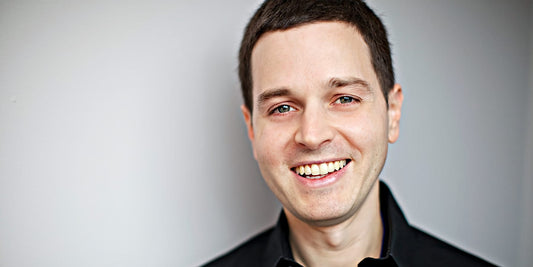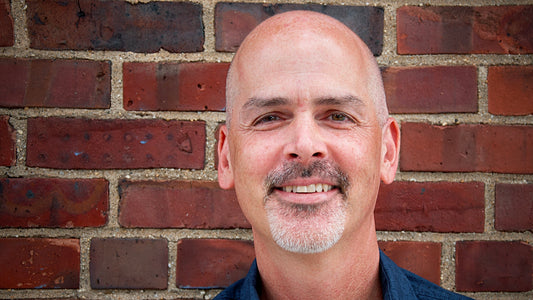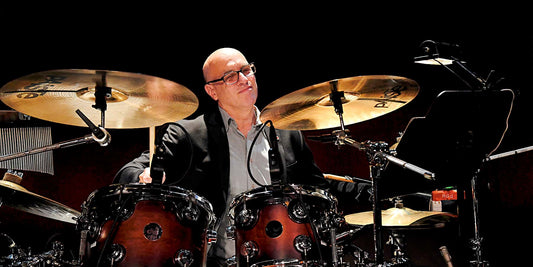
Developing a Broadway Show
A Drummer's Perspective
by Sean McDaniel
Broadway musicals can be developed many different ways, but the following process is how it has generally happened for me.
The first step is usually a “Reading”.
A Reading is a one to two week process of putting the show together for the first time. It will likely have a small cast and maybe a two-person band of piano and drums. The cast will read their scripts and sheet music while standing at music stands. Before a Reading, the composer will sometimes send me a demo of the songs. These could be piano and vocal only, or they might have some groove ideas on them. If there are drums on the demos, I will transcribe the parts, so that I will have them in rehearsal. If there are no demos for a song, I will have to sight read piano-vocal scores, or maybe just lead sheets. I am rarely given drum charts for a Reading. The musical director or composer might give me a suggestion of the song style and then we will just start playing. This is where drummers get to be creative. It’s a very rewarding part of the process to get to come up with grooves during the early stages. These grooves can go on to become the basis for the entire orchestration of the show.
I am rarely given drum charts for a Reading. The musical director or composer might give me a suggestion of the song style and then we will just start playing. This is where drummers get to be creative.
In most cases there is no sound reinforcement in an early Reading, so it means the drums have to be played very softly. It gets tricky because it’s important for the grooves to still have the same intensity and sound quality as a fully realized mic’d groove. I don’t like to write too much into the piano-vocal charts since the score will be changing a lot, so I try to internalize what I play on each song as early as possible.
I try to remember all of the grooves I played at the previous readings, since there will be new scores printed for each incarnation.
After a week or two of rehearsals there is usually a performance or two of the show for an invited audience. Sometimes these performances can be intense if there are important people in the room, or if certain sections of the show feel under prepared. This is why it’s so important to know the score and script very well. It’s good to be able to jump anywhere at any time without having to be told by the MD. The cast and band always pull together to have the best performance possible. There is a great sense of accomplishment after a musical is performed for the very first time.
After the first Reading,
several months (or even years) can go by while the authors do rewrites on the show. Multiple Readings can be done or maybe a “Workshop” or “Lab” will come next. Workshops are usually the next step and they expand on the Reading by adding a larger band, sound reinforcement, actors memorizing their material, and even costumes and dancing occasionally. They usually last between two to six weeks. I’ve done Workshops that seem just like readings, and I’ve done some that are basically the entire Broadway show staged in a rehearsal studio.
The most exciting parts for me are getting to add more musicians and being able to play a little louder with the addition of mic’d singers. I try to remember all of the grooves I played at the previous readings, since there will be new scores printed for each incarnation. Sometimes I will transfer my notes from a previous version. In a Workshop it is common to start seeing some drum charts since there is also a rhythm section present. It always lifts the show to a new level to hear bass and guitar added. There could also be technical elements added at this stage such as click tracks and electronic percussion.

Sean's setup for the Broadway Production of The Book of Mormon.
If choreography is being added for the workshop it means that the drummer, choreographer, and dance arranger will have some sessions to work on the specific dance music. This is another moment where creativity comes into play. Dance music could build on the song grooves, or it can go in a totally different direction. Frequently, the choreographer will want certain dance accents from the drummer. Some of these might be given to the orchestra later, but in the early stages the drummer can provide a lot of excitement to the choreography with crashes, accents, and other ways of highlighting the staging. Each stage of a musical brings more collaborators to the team.
If a Workshop is successful,
it could mean moving on to the next step, which is generally a full production. Sometimes the production is done out of town or Off-Broadway, but a Workshop could also lead directly to Broadway. Wherever the production may be, it leads to two of my favorite parts of the process: the full orchestration, and the drum booth/pit setup. Hearing the full orchestration of a musical for the first time is always a very emotional experience for everyone involved. Many new colors and textures start to appear. As a drummer it also shows where certain parts played in Readings and Workshops need to evolve. The relationship between the drummer and orchestrator is very important, and it is wonderful when there is a bond of trust formed.
Hearing the full orchestration of a musical for the first time is always a very emotional experience for everyone involved.
Orchestrators have various levels of specificity when it comes to drum parts. Sometimes the orchestrator expects the drummer to play everything he or she played in the Workshop. Sometimes they write new parts or additions that need to be played. Many things evolve when the orchestra comes in, but it’s crucial not to change too much rhythmically because the cast will be used to how everything sounded in the rehearsal room. If the show is fortunate enough to have a separate percussionist, the drum chair might not have to cover every little thing from the previous versions. It frees up the drummer to focus on the grooves more specifically. It’s also a lot of fun to see what the percussionist will bring to the grooves!
Moving into the pit is always very exciting,
but being isolated in a drum booth can sometimes be challenging. The best part of a booth is being able to play the drums at the full volume where they can sound best. I always try to go for a produced studio sound if the music calls for that. In a new booth I can experiment with heads, tuning, and mic placement (with the help of the sound team). Besides the orchestrator, the Sound Designer is a very important collaborator added at this stage of the process. The designer chooses the drum mics and creates the plans for the drum booth. The sound team also helps with the drummer’s monitor mix, which is imperative to getting the best performance possible.
The final collaborator in the Broadway process is the audience.
When we get to hear their applause and reactions it can really drive the energy of the show and add adrenaline to everyone’s performance. After a few shows go by, it is fun to reminisce about the time that this huge production was just a Reading performed for an audience of twenty people in a tiny studio. There is such joy that comes from starting a show at its first stage and seeing it through to Broadway. I am forever grateful for the collaborators who have given me this privilege throughout my career.

Bio:
Sean McDaniel is the drummer for the currently running Broadway production of Disney’s Frozen. On Broadway he has also originated the books for The Book of Mormon, Monty Python’s Spamalot, Dolly Parton’s 9 to 5, La Cage Aux Folles, and Violet. Off-Broadway he originated the book for Hamilton. As a substitute on Broadway he has performed in 13 different shows.
Sean is also the drummer for American Idol Runner-Up Clay Aiken. With Clay, Sean has toured the country and played on many TV shows. He has also performed with Aaron Tveit, Audra McDonald, Jennifer Hudson, Sting, Dolly Parton, Stephanie Block, Idina Menzel, Cheyenne Jackson, Lin Manuel Miranda, Ruben Studdard, Ariana Grande, and Jane Lynch. He maintains a busy freelance and recording schedule in New York City. Sean earned his BM at University of North Texas and his MFA at New York University.
Sean is a proud endorser of DW Drums, Evans Heads, Vic Firth Sticks and Mallets, and Sabian Cymbals.
Sean lives in New York City with his husband Ben Cohn and son Allister.
https://www.youtube.com/watch?v=b0T6N6sevm4
Sean performing Monster from the Broadway Musical Frozen
https://www.youtube.com/watch?v=Ge-jPxgOqyo
Sean performing Ashes with Clay Aiken



